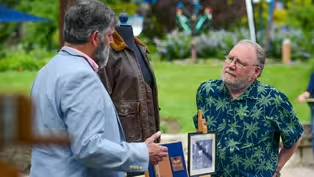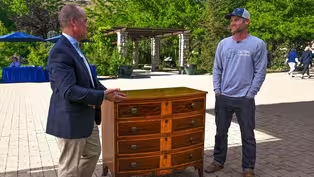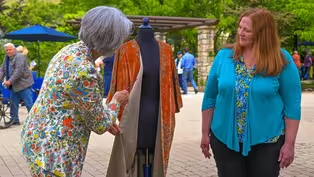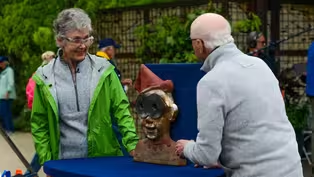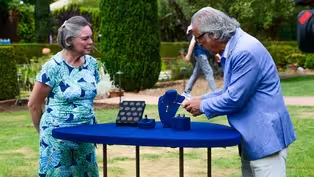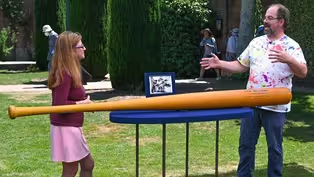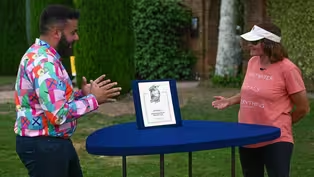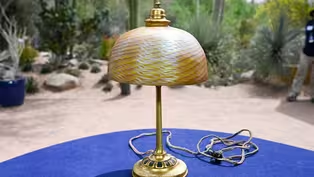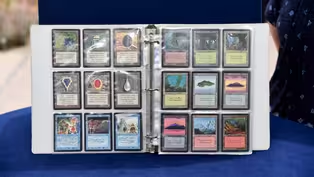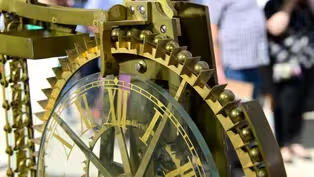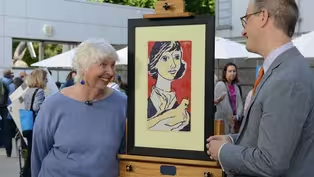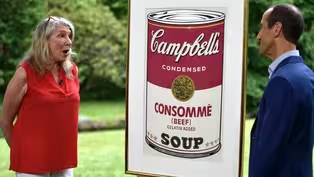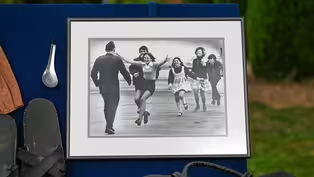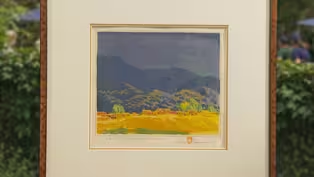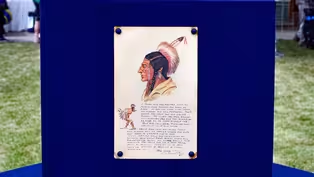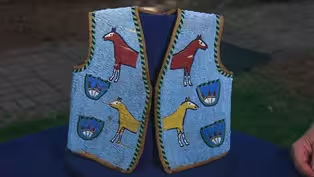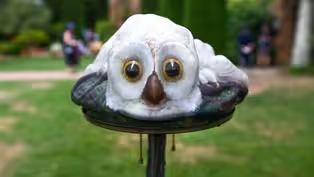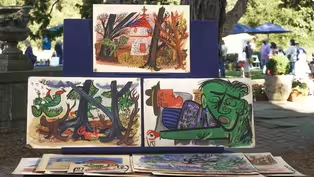
RECUT: Filoli, Part 2
Special | 22m 36sVideo has Closed Captions
Watch fascinating Filoli finds in this half-hour RECUT, including one up to $100,000!
Watch fascinating Filoli finds in this half-hour RECUT, including a 1956 Gustave Baumann Rain in the Mountains print, a Pairpoint Puffy Owl lamp, and Charles Marion Russell mixed media drawing. Discover which Filoli find is $80,000 to $100,000!
Problems playing video? | Closed Captioning Feedback
Problems playing video? | Closed Captioning Feedback
Funding for ANTIQUES ROADSHOW is provided by Ancestry and American Cruise Lines. Additional funding is provided by public television viewers.

RECUT: Filoli, Part 2
Special | 22m 36sVideo has Closed Captions
Watch fascinating Filoli finds in this half-hour RECUT, including a 1956 Gustave Baumann Rain in the Mountains print, a Pairpoint Puffy Owl lamp, and Charles Marion Russell mixed media drawing. Discover which Filoli find is $80,000 to $100,000!
Problems playing video? | Closed Captioning Feedback
How to Watch Antiques Roadshow
Antiques Roadshow is available to stream on pbs.org and the free PBS App, available on iPhone, Apple TV, Android TV, Android smartphones, Amazon Fire TV, Amazon Fire Tablet, Roku, Samsung Smart TV, and Vizio.
Buy Now
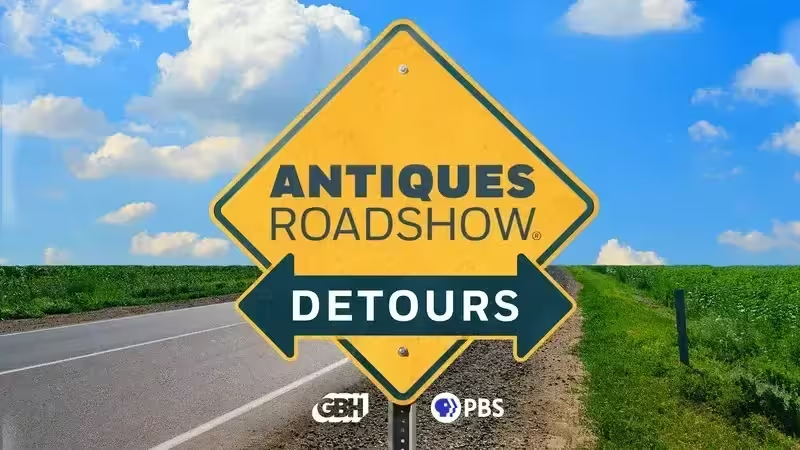
ANTIQUES ROADSHOW DETOURS
Ever wondered what happens to the treasures featured on America’s beloved ANTIQUES ROADSHOW after the cameras leave town? Host Adam Monahan tracks down the juicy afterlives of your favorite finds from PBS’s hit series.Providing Support for PBS.org
Learn Moreabout PBS online sponsorshipMore from This Collection
RECUT: Idaho Botanical Garden, Part 4
Video has Closed Captions
Wrap up Season 4 of RECUT with a $50,000 appraisal at Idaho Botanical Garden! (22m 31s)
RECUT: Idaho Botanical Garden, Part 3
Video has Closed Captions
Visit the “City of Trees” for unbe-leaf-able Boise treasures in this half-hour RECUT. (22m 31s)
RECUT: Idaho Botanical Garden, Part 2
Video has Closed Captions
In this half-hour RECUT, watch breathtaking Boise appraisals at Idaho Botanical Garden. (22m 31s)
RECUT: Idaho Botanical Garden, Part 1
Video has Closed Captions
Gem State treasures sparkle in this half-hour RECUT at Idaho Botanical Garden! (22m 31s)
Video has Closed Captions
Watch wow-worthy Woodside finds in this half-hour RECUT and learn which is up to $44,000! (22m 24s)
Video has Closed Captions
In this half-hour RECUT episode, golden state treasures shine at Filoli. One is $150,000! (22m 23s)
Video has Closed Captions
This season's first half-hour of RECUT wows our guests with a $200,000 to $330,000 find! (22m 30s)
RECUT: Desert Botanical Garden, Part 2
Video has Closed Captions
Phoenix treasures heat up, like one appraisal up to $35,000, in this half-hour RECUT! (22m 28s)
RECUT: Desert Botanical Garden, Part 1
Video has Closed Captions
Phenomenal Phoenix finds abound in this half-hour RECUT. One is worth up to $100,000! (22m 26s)
RECUT: Crocker Art Museum, Part 2
Video has Closed Captions
See stunning Sacramento finds like one $80,000-$125,000 treasure, in this half-hour RECUT! (22m 28s)
RECUT: Crocker Art Museum, Part 1
Video has Closed Captions
Head to California’s Crocker Art Museum for a bite-sized RECUT! One find is up to $75,000! (22m 27s)
RECUT: Winterthur Museum, Garden & Library, Part 2
Video has Closed Captions
Discover Delaware treasures in this half-hour RECUT, including one valued at $50,000! (22m 27s)
Providing Support for PBS.org
Learn Moreabout PBS online sponsorship♪ ♪ CORAL PEÑA: "Antiques Roadshow" is getting things rolling at Filoli in Woodside, California.
This was the first moment we saw my dad.
I'm known as the Leaper or the Jumper.
Oh, my God, you're kidding!
(laughing): No.
I mean, really?
♪ ♪ PEÑA: In this half hour, "Antiques Roadshow Recut" continues our visit to Filoli in Woodside, California.
After the death of the original owners, William and Agnes Bourn, the second and final residents of Filoli were the Roth family, who bought the estate in 1937.
Believing that Filoli was too beautiful to be private, Lurline Matson Roth donated the house and garden to the National Trust for Historic Preservation in 1975.
Today, "Roadshow" is taking over Filoli.
Check out what we found.
♪ ♪ GUEST: My father, uh, bought this sometime in the, I think it was the early to mid-'70s.
I was, like, ten.
My dad bought this from Gustave Baumann's widow when she had come to Colorado State University.
She was selling some of his work to raise money, selling from the estate.
And this one always stopped him.
Yeah, yeah, not hard to see why.
(chuckles) No, it's...
These colors are beautiful.
It's... Yeah, it's just...
It says everything about the West, uh... Sure.
And so he bought it for, like, $125.
The artist is Gustave Baumann, you know that.
Yes.
He was actually born in Germany and came over to the States as a child with his family, and was living in the Midwest.
Uh-huh.
Midwest, okay.
He trained in Chicago and worked in Indiana, and it wasn't until about 1918 that he made his way down to New Mexico.
He was intending to go to Taos.
He got to Taos and he thought it was too busy.
(laughs): Okay.
So a friend persuaded him to move on to Santa Fe.
So he gets to Santa Fe and basically plants himself there, and works in Santa Fe for the next five-plus decades.
And his imagery have become synonymous with the Southwest.
He and the Southwest are so intertwined, and New Mexico, and this feel... Yeah.
...of, of the Southwest.
The feel of...
It's...
The light, he got the light just right.
The light through those colors is amazing.
I know.
And the appreciation for his work has just grown over the past couple of decades, and he is super-hot now.
Baumann made the original blocks for this color woodcut in 1926, which is just about eight years after he arrived in Santa Fe.
And this, you can see, of course, is titled "Rain in the Mountains."
This is from the fourth edition.
He printed four editions of this subject over a 30-year period, starting in 1926, and completing with this fourth and final edition in 1956.
The fourth edition is from an intended edition of 50.
That's why it's numbered 19 of 50.
And the "R-C" next to that numbering means the blocks were recut, reshaped by him... Oh.
...to produce this fourth edition.
Uh-huh.
This is the smallest edition, but there are all these intense colors.
Yeah.
And what's great about this, too, is the way that the rain is coming down.
Yeah.
In strips from... That, that's just such a great talent, to be able to pull that off by cutting a wood block.
And then he mixed all the colors himself, signed it in pencil, titled it, and then this is his hand in heart ink stamp, which he used on his color woodcuts, just his sort of monogram symbol.
Uh-huh.
The appreciation for these... Uh-huh.
...like I said, the past couple of decades, has just increased exponentially.
(laughing): Okay, now I'm really nervous.
Would you have... Any guess as to what its value is?
Well... Like...
I, I, I guessed that, 'cause I know he's popular, but I thought ten times what my dad bought.
So, $1,250 or something, $2,000, something like that.
So you're in the thousands.
This is a great image.
Uh-huh.
It's, it's...
The more evocative you get with his imagery of the Southwest, the better.
It's also one of the larger color woodcuts.
Uh-huh.
So it's got everything going for it.
The colors are also perfect, like the day they were printed.
It's, that's tough to find.
I would put a replacement value or insurance value on this... Uh-huh.
...at $50,000.
(gasping): Oh, my God!
That is so much more than I thought.
I think it was.
Oh, that is so much more than I thought.
Yeah, it's, it's a phenomenal print.
Okay, I, um...
I, okay, I'm, I'm going to have to do something about that.
Yeah.
It's just a beautiful image.
Oh, thank you.
Thank you so much for bringing it in.
I, I, thank you for letting me know.
That's really amazing.
(laughing): Really, really amazing.
(chuckling): It's an amazing image.
Yeah, thank you.
Yeah.
It's always been of value to me, and now I'm going to go to an insurance agent and make sure that I've got it covered.
Yeah.
This one, this one sums up Baumann so well.
Yeah.
(both laughing) I feel like I'm having trouble breathing a little bit.
Oh, my God, you're kidding.
(laughing): No.
I mean, really?
(both laughing) My mother was a closet collector, and, uh, in New York City, and she came home one day, and this was there.
And I asked, "What's the story on this?"
And she said, "Well, it's just a little something I got."
And that's what I know.
It just appeared in our apartment.
And do you know where she got it?
Yeah, she got it from a dealer in New York.
Did you know the name of the dealer?
Carol Ferranti.
She got it in the '60s.
And knowing she got it from Carol, I'm sure it was quite a lot.
(chuckles) Couple of thousand dollars, maybe.
Oh, wow.
And she did actually say she paid that in the 1960s?
Uh... That seems like a lot?
It does, actually.
Yeah.
Carol Ferranti was a very well- known dealer in New York City, and she handled all kinds of lamps, including Tiffany, and also lamps that were made by this company.
Wow.
And did you ever look for signatures?
(chuckling): No, but I just saw that there is one, I think.
Okay.
But you don't know what it, it stands for.
No, I don't, I don't.
Okay.
Well, it's very discreet, because on the underside of the lamp, there is this lovely little diamond-shaped signature with a P in the middle, which is the way the bases would be signed for the Pairpoint Company.
Uh-huh, oh.
And Pairpoint originally made a lot of silver-plated metalware.
And, uh, in 1894, they joined with Mount Washington Glassworks.
Uh-huh.
They were both based in New Bedford, Massachusetts.
But they didn't start making lamps that look like this until 1907, when they applied for the patent for the particular technique that was used to make this shade.
The shade is called a blown-out shade.
Mm-hmm.
And blown-out shades were blown glass, and then they were actually...
They, um, acid-treated the surface, and then after that, the interior was painted.
Uh, today a lot of us refer to these as Pairpoint puffy lamps.
Oh.
I really like this.
This is, it's, this is very unusual.
Because what, what I've been accustomed to seeing, and also on "Roadshow," the only types of, uh, Pairpoint puffy lamps that we've seen have been florals.
Yeah.
And to have this unbelievable owl, who is perched on a branch ready to pounce on its prey... (chuckles) ...which is a little ominous, but beautifully rendered... Uh-huh.
...is a rare form.
Hm.
This came in two types.
That, this is, uh, the simpler base, and then there is, a base that is comprised of an owl, sculptural owl form.
Oh.
But this definitely came this way.
For the most part, the condition of this is really terrific.
Mm-hmm.
There is some sign of corrosion.
That's not unusual.
So, um, do you have any idea, um, of value on this?
No, not really.
Okay.
All right, so on this particular base... Mm-hmm.
...a good retail value would be $25,000 to $30,000.
Wow.
Now, if you had the owl base... Yeah.
...it would be more in the range of $60,000 to $70,000.
Wow.
I've had it in my garage for probably 25, 30 years.
I bought it at a car swap meet.
Never seen anything like it before, and I didn't know that they made tractors back then.
I brought my grandfather's, uh, violin that he played, uh, in the 1920s.
So, I don't know much more about it other than he was a big fan and it's well-played and well-loved.
♪ ♪ GUEST: Today I brought the clothes that were worn by my father when he was a prisoner of war in Vietnam.
He was shot down in North Vietnam in... October 27, 1967, captured.
And he was in a variety of different prisoner-of-war camps.
When he was released, he was at the, the infamous French prison Hoa Lò, also known as the Hanoi Hilton.
Mm-hmm.
And that he was, uh, repatriated March 14, 1973.
Did he have any other interesting, uh, people that he was with in prison?
(chuckling): Oh, absolutely.
He told me a st, a great story that the first time he ever laughed in jail was a joke that John McCain had tapped through the wall.
They were sharing a wall while they were both in solitary confinement while they were in, uh, Son Tây.
(chuckles): So John McCain tapped the joke to him?
Tapped the joke to him, yes.
Wow-- wow.
John McCain was shot down the day before my dad, and they were repatriated the same day in order of their shootdown.
Wow.
Wow-- well, he was a, uh, F-105 Thunderchief thud pilot, was what they were called.
Thud pilot, yes, yes.
Yeah, yeah, and we have some great things here.
We have his top and trousers from jail, from the, from the prison camp.
Yes, from jail.
With his prisoner numbers on them.
We've got his bag, uh, with more material in there.
And the bag has the original Red Cross tag on it?
Yeah, this is the original Red Cross tag.
And this little tag right here was written by the North Vietnamese.
And they handed him the bag.
And we've got a pair of sandals that he wore in prison right here?
Yes, the Vietnamese said that those were made out of the tires of the airplane that he was shot down in.
Hm.
So it was mental cruelty right there, too.
Right.
That he had to walk in those shoes.
And what about the spoon?
The spoon, that was his spoon when he was, uh, for, for all his meals.
And in an act of defiance, he etched a thunderbolt in the bowl of the spoon.
I guess it was just his own little way to have some sort of control.
Right.
And then one of the most iconic things here, because I remember it as a kid.
Um, I remember this picture, is the one right here.
Tell us about that.
This picture is called "Burst of Joy."
It was taken at Travis Air Force Base on March 17, 1973.
This was the first moment we saw my dad... ...when the aircraft landed.
We were in a car behind the aircraft on the tarmac, and then they said, "You can get out now."
So we just burst out of the car and started running to my dad.
And it was captured by Sal Veder, an A.P.
photographer.
And he won the Pulitzer Prize in photography for this picture, "The Burst of Joy."
The photograph was given to me personally by Sal in 1990-- he signed it, "Lorrie, with best wishes, Sal Veder."
Wow.
And where are you?
(laughs) I'm known as the Leaper or the Jumper.
The Leaper?
(laughs) Well, I got to say, if it was my dad, I'd be leaping, too.
We were very excited.
Um, I'm sure.
And I remember seeing it on the news, and I also remember the video footage of him, uh, leaving North Vietnam, Vietnam with John McCain.
Yes.
Great stuff.
Um, and it's, in a way, this is kind of hard to appraise because of the...
Yes.
...that goes along with it.
Yes.
I'm having a hard time, too.
(chuckling): Yeah, it, it is.
Precious.
Um, so, as a auction estimate, it would be in the $2,500 to $3,000 range... Mm-hmm.
...which doesn't seem like a whole lot.
However, um, the historical value on this is absolutely priceless.
My dad is alive.
He is doing fabulous.
Uh, he's healthy, he's well, he's 89 years old.
Wow.
Well, please tell him when you get home thank you for his service.
Thank you, I will.
He'll be very pleased to hear that, thank you.
GUEST: My grandfather actually won this vest in a poker game.
He was a colonel in the Air Force, and he was stationed in Gallup, New Mexico.
In 1944, not yet a colonel, he went off base to play a game of poker.
The gentleman lost to my grandfather and he didn't have enough money to cover the debt.
So he gave my grandfather this vest and told him that it was once worn by a child of Sitting Bull.
And this man was Native American himself, and that's all I know.
It's been passed down in our family ever since.
So you don't know what the debt was?
I don't know what the debt was.
That'd be interesting.
I don't think my grandfather was a huge gambler, so I don't think it was a huge debt.
But he was a young man, so it could have been different then.
He wanted to get off post.
(laughing): Right, probably.
Right.
This is a child's vest, a young boy's.
I think the name Sitting Bull was used because people are going to know Sitting Bull, Geronimo, Cochise, Natchez...
I mean, there's a group that were publicly known figures.
It's none of that.
Oh!
This vest was probably made a long time before he got it.
Oh.
I would say no later than the first ten or 15 years of the 20th century.
Wow!
And, and no earlier than about 1895.
It's all thread-sewn.
Any earlier than that, it would have been sinew-sewn with dried animal sinews.
The reason we know it's not Lakota, which, Sitting Bull was Lakota, is, is this stitching style is something that you see more in the Northern Plains and the Northwestern Plains.
And we had a little discussion about it, and because of all the horses, we think it's probably Nez Perce.
Oh!
And they were in Western Montana, in northern Idaho, that area.
Uh, and were one of the last major tribes who fought in the Indian Wars against the U.S. government and the cavalry.
The materials, it looks like it's all canvas, and it's been beaded on that canvas.
It's fairly stiff and it's lined with cloth.
The beads are glass beads, probably from Murano, Italy, or from Eastern Europe.
And this took a long time to make.
And the horses are the classic.
And a lot of people don't know that horses were an invasive species like cattle.
They were brought by the Spanish and they exploded in population.
And if you turn it around, there are more horses.
(chuckling): Yes, there are.
And they're beautiful.
And these have brands.
It would take a lot of research to find out what those brands are, and, and we might not ever.
The flags appear to be cavalry guidons that a flag carrier would have on a staff.
Those triangle flags.
Right.
It all relates.
This child was probably the son of someone who had a lot of horses.
If this were for sale in a retail situation, say a gallery, it would be $3,000 to $5,000.
Oh, wow!
Uh, as is.
And I wouldn't bother to have it repaired.
There's a few areas of bead loss.
I wouldn't worry about it.
It's just part of the history of the piece.
Right.
♪ ♪ GUEST: Came into our family about 70 years ago.
I was told by my father it came out of Albright's Hardware Store in Albany, New York.
Beautifully made.
Um, I think if it came to auction, you'd see an estimate in the $1,500 to $2,500 range.
Oh!
Yep.
Beats throwing it into the fireplace.
Absolutely.
I brought these, which I don't think are worth anything... (laughs) ...other than to me, and my mother brought those from Europe, probably in 1920.
Oh, how fun.
So they're old.
Yeah.
So this is a, um, a sketch out of, um, C.M.
Russell's sketchbook... Mm-hmm.
...from the 1920s.
It hung on the back of my father's bedroom door.
He had an aunt, who in the early '20s went out to Wyoming, a single woman, and she traveled out there and met Russell, and he gave her this page from his sketchbook.
Oh.
And she brought it back to New York, where my father grew up... Uh-huh.
...and gave it to my father, who was probably a toddler at the time.
Yes.
And it was put on the back of his bedroom door, and stayed there until my grandparents died in the early '80s.
And that's how you got it?
That's how I got it, yeah.
Oh, okay.
Well, it's Charles Marion Russell, is the artist.
He's born in Missouri in 1864, and he died in Montana in 1926.
He's actually signed it "C.M.
Russell" down here.
And next to his signature is a little sketch of a skeleton head of a steer, and that was frequently the way he signed.
He was known as a painter and a sculptor of, uh, old Western scenes involving cowboys and Indigenous people.
And it's believed that he's done as many as 4,000 works of art total... Wow.
...in his complete, uh, tenure as an artist.
This particular work is a mixed media.
It's watercolor, color pencil, and ink.
I would date this piece probably circa 1915 or even 1920.
There's no real way of knowing exactly who this person is, but it wasn't really probably meant to be any person in particular.
It was just, ju, a generic figure... Mm-hmm.
...of a Native American.
The figuration of it is typical, the way he drew the Native American.
And you see that little drawing down there, as well... Yeah.
where they're, he's actually dancing and so forth... Yeah.
...with the, the feathers and all the rest.
Yeah.
But it's unusual in the sense you've got all this written part in here.
You said it came out of his sketchbook, so... Yeah.
He's basically lamenting the treatment of Native Americans and criticizing the government for a lack of respect... Yeah.
...for their culture and so forth.
Mm.
So I was just wondering if you would, uh, help us out by maybe just reading the second paragraph down there.
Sure.
"Uncle Sam lets him play injun once a year, "and he dances under the flag that made a farmer out of him.
"Once nature gave him everything he wanted, "now Uncle Sam's agent gives him bib overalls, "hooks his hands around plow handles, "and tells him, 'It's a good thing.
"Push it along.'
"Maybe it is, but they're having a hell of a time proving it."
So he uses the term "injun," which is, without a doubt, highly offensive.
But I think what he's doing is describing the attitude of the government... Mm.
...and his displeasure with their disrespect for their culture.
I would say that this piece is probably worth between $80,000 and $100,000 at auction.
Wow.
Mm.
(chuckling): I am truly surprised.
Yeah.
Wow.
That's incredible.
It's a very, very special... Wow.
Very special piece.
Awesome, thank you.
And, uh, we're really grateful for you bringing it, it in.
Yeah, thank you.
That's so exciting.
(laughs) ♪ ♪ PEÑA: You're watching "Antiques Roadshow Recut" from Filoli in Woodside, California, part two.
I grew up with my uncle's art in our house.
I called him Uncle Deanie, because he was Roy Dean De Forest.
Uh-huh.
My earliest memories of him are sitting at the kitchen table doodling.
I would doodle something and he'd make something out of it.
And then he would doodle something and I'd make something out of it.
This collection was done in the late '50s.
He had gone to school for a B.A.
in art and he hadn't started for his master's yet.
Uh-huh.
And he was working at the iron foundry in Richmond.
My mother said...
He was kind of down and she said, "Well, you know, I'm going to write this children's book "about a tooth fairy named Chlorophyll.
What do you think?"
And he got really excited and he made these drawings for her.
The story was kind of dark for the time.
That's Chlorophyll, and he ended up at some point going in the night and pulling teeth out of adults' mouths.
There... Well, that's scary.
(laughing) I know, right?
What's so amazing to me is, the vibrancy and the subject matter is something that he grew throughout his really wonderful, wonderful career.
Such great imagery, and this composition, with this, like, scary tooth being pulled out of this guy.
But look at the palette.
I mean, it's so vibrant.
Happily, people have come to love his work.
And he's represented in some of the finest museums in the country.
He was a great teacher.
He was a sculptor, he was an artist.
And now we see that he's an illustrator.
Was he a fashion designer, too?
(chuckling): No, but I am wearing one of his shirts.
I always say, if I wear the shirt, he's got my back.
So have people seen these before?
Have they been published?
Have they been...?
No, they have not been published.
In fact, they've only been seen by a few members of the family.
They're gouache on paperboard.
I've spoken with some of my colleagues, and we think that this really is quite mature and, and shows what he was going to do, and what he would become famous for.
So we're thinking that an insurance value of maybe $40,000 for the collection of 13, uh, would be a good place to start.
Because they should be insured.
Yes.
I mean, he's a, he's a hero.
(chuckles) He's a, he's a California hero.
Yeah.
How did the story end?
What happened to Chlorophyll?
You know what?
I don't know.
(laughing) I don't...
I'm not even really sure that my mother ever actually finished it.
PEÑA: Thanks for watching.
See you next time on "Antiques Roadshow Recut."
Appraisal: Vietnam POW Lieutenant Colonel Robert L. Stirm Archive
Video has Closed Captions
Clip: Special | 4m 23s | Appraisal: Vietnam POW Lieutenant Colonel Robert L. Stirm Archive (4m 23s)
Appraisal: 1956 Gustave Baumann Rain in the Mountains Print
Video has Closed Captions
Clip: Special | 4m 49s | Appraisal: 1956 Gustave Baumann Rain in the Mountains Print (4m 49s)
Appraisal: Charles Marion Russell Mixed Media, ca. 1915
Video has Closed Captions
Clip: Special | 3m 19s | Appraisal: Charles Marion Russell Mixed Media, ca. 1915 (3m 19s)
Appraisal: Nez Perce Beaded Child's Vest, ca. 1900
Video has Closed Captions
Clip: Special | 4m 4s | Appraisal: Nez Perce Beaded Child's Vest, ca. 1900 (4m 4s)
Appraisal: Pairpoint Puffy Owl Lamp, ca. 1907
Video has Closed Captions
Clip: Special | 3m 24s | Appraisal: Pairpoint Puffy Owl Lamp, ca. 1907 (3m 24s)
Appraisal: Roy De Forest Gouache Paintings, ca. 1955
Video has Closed Captions
Clip: Special | 3m 11s | Appraisal: Roy De Forest Gouache Paintings, ca. 1955 (3m 11s)
Providing Support for PBS.org
Learn Moreabout PBS online sponsorship
- Home and How To

Hit the road in a classic car for a tour through Great Britain with two antiques experts.













Support for PBS provided by:
Funding for ANTIQUES ROADSHOW is provided by Ancestry and American Cruise Lines. Additional funding is provided by public television viewers.


